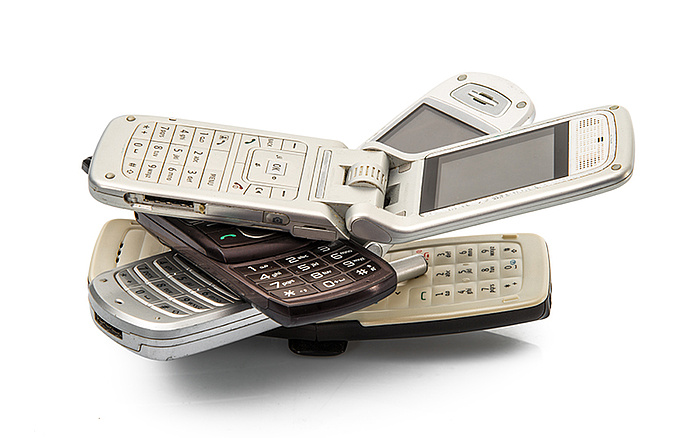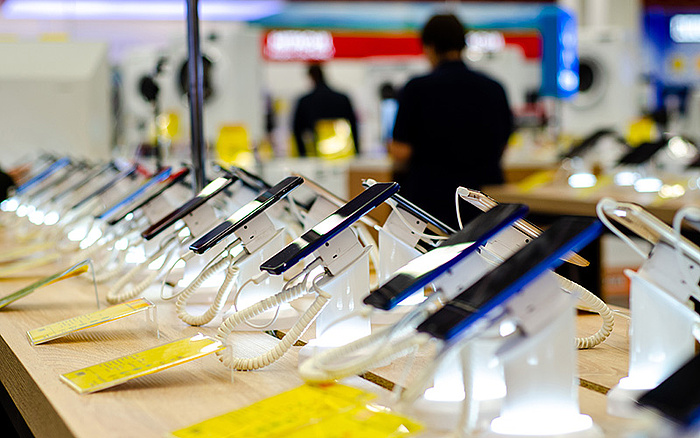
Everyday IP: Spreading the word about mobile phones
An ocean of technological advancement separates the mobile phones flaunted by business executives in the 1980s and the smartphones we know so well today. But even these first consumer models were the product of decades of research and innovation.
From their inception in the 1970s to their market debut as awkward-looking "luxury" items to their status as a mainstay of modern life, the development of mobile phones has seen exponential growth. With a trajectory like this, the history of handheld communication is inextricably bound to Intellectual Property (IP) and has played host to some of the most grueling patent-related legal disputes ever fought. We explore the IP milestones of the device owned by more than 90% of the population of about half the world's countries.
First-time caller
Various forms of portable telephonic communication had existed for decades prior to the invention of the first handheld mobile phone: notably car phones and field telephone systems used as far back as the Second Boer War at the turn of the 20th century. But while military systems still used a physical connection, the true wireless phones introduced in the 1940s for truckers were prohibitively expensive and held few advantages over two-way radios.
The first proposal for a more feasible mobile telephone network came from Bell Labs in 1971, authored by Richard H. Frenkiel, Joel S. Engel and Philip T. Porter. Then a joint subsidiary of the American Telephone and Telegraph Company (AT&T) and Western Electric, the research company was at the forefront of communications development. But just two years later, in midtown New York, Martin Cooper of Motorola placed the first in-public call from a handheld mobile phone as part of his efforts to make a dent in AT&T's legally sanctioned monopoly. Of all people, he called his competitor, Joel Engel, at Bell Labs' Murray Hill facility in New Jersey.
Cooper certainly captured the telecom industry's attention, if not consumer interest. His patented cell phone system was cumbersome and still years away from market deployment, not least because the wireless infrastructure envisioned by Frenkiel, Engel, Porter and others would not be implemented for several years. In the meantime, Cooper and Motorola chief mobile engineer John F. Mitchell continued to hone their system to create the DynaTAC handset, a somewhat more manageable abbreviation of the fittingly clunky "Dynamic Adaptive Total Area Coverage."

Car phones were something of an expensive novelty from the 1940s till the 1970s, when new service networks expanded their practicality. By running off the vehicle's battery, these next-generation car phones were much less cumbersome than their handheld contemporaries.
When a handheld mobile phone was released to the public for the first time in 1983, it attracted significant consumer demand despite its high price ($3,995 USD; equivalent to $11,700 USD or €11,100 today) and functional limitations (10 hours of charging for 30 minutes of talk-time in a hefty 760g package). The DynaTAC 8000x ran on the advanced mobile phone system (AMPS), a first-generation (1G) cellular network developed by Bell Labs in cooperation with Motorola.
From status symbol to (relative) affordability
In the 1980s and early 1990s, if you owned a handheld mobile phone, anyone seeing you use it might reasonably assume you either worked for a government agency or were very wealthy. Yet as the mobile phone market began to grow and phones' underlying technologies advanced, they gradually shrank in size as well as cost: Prices were in the mid-hundreds rather than thousands. Nokia, Ericsson and Samsung were some of the biggest producers during this era of mobiles, with Nokia's affordability and reliability (especially with models like the 5110) making the Finnish brand popular.
Not all just talk: the rise of feature phones
Smartphones, which combined calls with varying levels of internet accessibility and advanced computing power, began to emerge in the mid-1990s. However, the first of these, the IBM Simon, was a commercial failure, and the handful that fared better were too expensive for mass adoption. While not quite reaching DynaTAC prices, they were still beyond what casual consumers were willing to pay.

Sometimes disparagingly referred to as "dumbphones," this broad category of devices saw mobile telecommunication come into its own. Battery life and size had advanced to a point where phones could be comfortably and affordably used throughout the day.
Combing functionality with accessibility, a class of cell phones that were not quite smartphones but had notable uses beyond calling and texting dominated the market. Often retroactively called "feature phones," some had internet access via the 3G band, usually limited to email and rudimentary web browsing. But the "features" that gave them their retronym were more likely to be high-quality (for their time) cameras, games, GPS tracking and the ability to store and play MP3s. Notable examples include the Motorola RAZR — the all-time best-selling flip phone — and the LG Chocolate.
Think fast: smartphones steal the show
Apple co-founder and CEO Steve Jobs was widely known as a genius marketer and business leader, enough so to outweigh his shortcomings as an engineer. He was able to foster the technical and design skills of those he worked with, collaborating to produce an abundant IP portfolio. Of the 458 patents that bear his name — around a third posthumous — many are design patents.
So when he brought Apple into the smartphone market, the flagship product reflected Jobs' priorities: elegant physical design, expansive utility and an intuitive user interface. The iPhone's ease of use and Jobs' marketing ingenuity made the combination of "an iPod, a phone and an internet communicator" a pop-culture touchstone. Eventually, variable pricing (including several low-cost models), a wide range of functions (both native and from external apps) and a continued emphasis on usability gave the iPhone line a robust presence in the smartphone market.
Compare this with the BlackBerry, the defunct line of smartphones produced initially by Research In Motion (RIM). These mobiles had the boxy look and extensive keyboard of personal digital assistant (PDA) devices and often operated most effectively as such. This, together with the early reliability of their cellular network, drove their popularity among business users. The BlackBerry's chief advantage came in offering key smartphone capabilities (web browsing, email, media playback and so on) at a reasonable price point. But the emergence of the Android operating system and Apple's release of affordable iPhones, coupled with service outages and developmental inertia, caused RIM to start losing users en masse after its 2012 peak of 80 million subscribers. Unable to regain the ground lost to more innovative competitors, the organization licensed its hardware IP to various companies and pivoted into software development. Support for BlackBerry mobiles finally ended in 2022.

Many companies were experimenting with single-touch screens in the early 2000s, but LG Electronics was the first to market a capacitive ("multi-touch") version. Created in partnership with the Italian fashion house, the LG Prada beat the iPhone to stores by about a month in May 2007.
Unlike with the iPhone or BlackBerry, Google's success or failure in the smartphone industry was never contingent on a single device. Its mobile operating system, Android, has always been open-source software. Now used by the search giant's in-house Pixel phone, Android has been licensed by dozens of companies that manufacture a wide range of smartphones. Samsung produces and sells the largest share of such mobiles — and, by extension, dominates the global smartphone market with its Galaxy line. However, OnePlus, Motorola, Asus, Google Pixel and other brands have their proponents.
The smartphone IP wars
The cheeky rivalry between Motorola and Bell may have matured into a collaboration, but not all competition is so sporting. The seven-year dispute between Apple and Samsung is the best-known patent conflict of its kind: encompassing suits, countersuits, motions, counter-motions, hostile public statements and a final award of $539 million USD for Apple in 2018.
During the earlier eras of mobile phone development, the stakes were not nearly as high, and every player in the field was trying different approaches. Hence, infringement — even accidental — was relatively uncommon. Now that smartphones are all but ubiquitous and a small number of companies dominate the market, billions are at stake with every decision. Disputes can arise for any number of reasons: Some manufacturers, like Nokia, pursue IP litigation more vigorously in the face of falling sales. Others, such as Motorola, have filed suits because they believed holders of standard-essential patents (SEPs), like Apple, were not adhering to fair, reasonable and non-discriminatory (FRAND) standards when licensing their IP. That said, Google, which owns Motorola, has plenty of its own SEPs and has also been accused of misusing them.
Every company in every sector has the right to protect its IP — and to defend itself from spurious claims of infringement. Yet without a sound strategy, the success of such efforts is a toss-up. Expert patent and trademark lawyers from Dennemyer & Associates can help you map out a concrete legal path for protecting your IP worldwide.
Filed in

IP infringement disputes abound in the film industry but some are more dramatic than others. Explore the unusual IP cases spawned from prominent movies.



